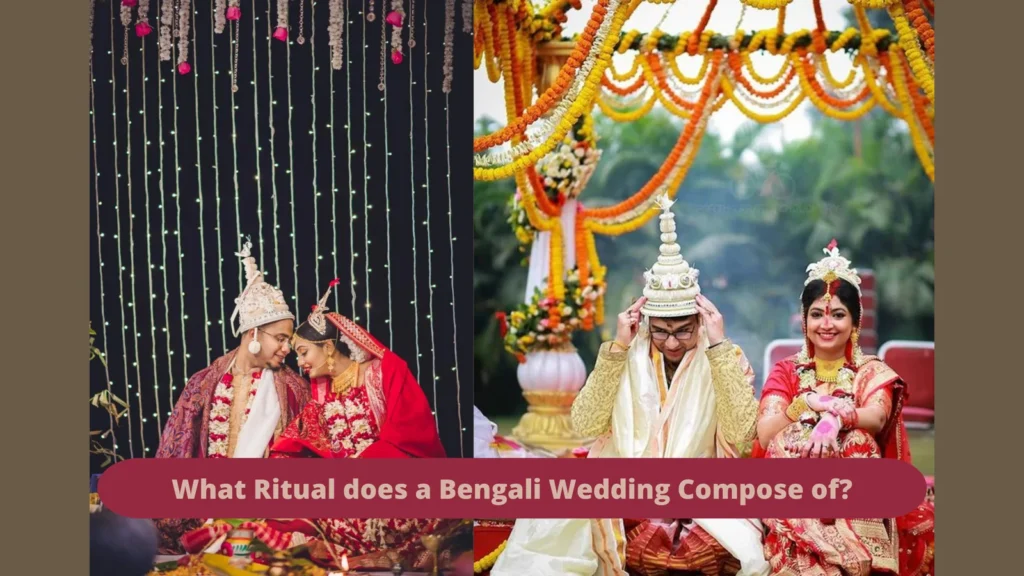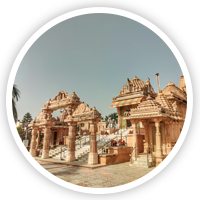
What Ritual does a Bengali Wedding Compose of?
Bengali culture is one of the richest cultures in India. In a culture filled with rashgullas and misthi doi, Bengali people have a lot of rituals that are one of a kind! Let us brief about a few of them and learn how and what these cultures consist of:
Adan Pradan – Finalization of the Date
The extravagant Bengali wedding starts with the custom of Adan Pradan in which both the families of the bride and groom’s families meet to finalize the wedding date.
Ashirbaad-The Blessing
For this ritual, the family of the groom visits the bride to shower her with blessings and gifts as a symbol of her inclusion in their family. The same is done by the bride’s family for the groom too on a different date.
Aiburo-bhaat – The Last Meal as Unmarried
This ritual involves a meal comprising the favorite dishes of the person about to get married. This ritual takes place in the respective households of the bride and the groom on the afternoon of the day before the wedding.
Nitbor & Nitkone
This is a unique custom associated with the Bengali wedding. Bor means groom and kone mean bride. The nitbor is a boy child who shall accompany the groom from the aiburo-bhaattill the wedding. The same is done for the bride by a little girl from the bride’s family. She is called the nitkone.
Ganga Nimantran
Another unique ritual in a Bengali wedding is that of inviting the River Ganga. Some members of the family march towards the river while blowing conch shells.
Dodhi Mangal-The day break meal
The rituals of a Bengali wedding start before daybreak. The bride and the grooms are fed soaked flattened rice or chuda mixed with mishti doi or sweet yogurt.
Nandi Mukh
This ritual involves paying homage and respect to the forefathers of the family of the bride as well as the groom. The bride and the groom sit with the eldest male member of their respective families to perform the ritual.
Tatta
Bengalis exchange gifts for the wedding. These gifts include different kinds of ethnic clothes, cosmetics, toiletries and accessories for the bride and groom, clothes for the family members, clothes and toiletries for the nitbor and nitkobe, sweets, a whole fish, etc. These usually come in decorated trays.
Patta bastra-The sacred attire
The main Bengali wedding rituals take place under the chhadnatola or wedding mandap, which is a decorated square area or stage. Before the rituals start the groom needs to change into specific attire called the patta bastra.
Subhi Drishti-The first auspicious glance
The Bengali wedding rituals start as the bride is brought to the chhadnatola on a pidi or low wooden stool, held by her brothers. She is taken round the groom in seven circles while she covers her face using a betel leaf.
Sampradan
An elderly male member of the family or the bride’s father performs the ritual which signifies handing over the daughter to the man who is about to become her husband.
Yagna
Now, the bride and the groom sit next to each other while the priest helps them perform the yagna in front of the sacred fire. The ritual of a Bengali wedding is performed to make the God of Fire – Agni – a witness to the sacred union.
Saptapadi
For this ritual, the bride steps on seven betels leave placed on the ground one after the other. The groom follows while moving Nora with his feet as they move forward. A Nora is a cylindrical stone used to ground spices.
Bashoor Jaaga
After the Bengali wedding ceremony, the bride and the groom take dinner with their close relatives. Then they enter a room called the Bashor ghor. The sisters of the bride guard the door of the Bashor ghor and they demand money from their new brother-in-law in exchange for letting him enter the room. Only after he agrees and an amount is decided, he get the opportunity to enter the bashor ghor.
Kaal Ratri
After the bride is welcomed into the family, she and the groom seek blessings from all elders who shower them with gifts. The mother-in-law gives her a special gift – the loha – a special kind of bangle made with iron. She is supposed to wear this on her left wrist always.
Bou-Bhat
The next day the bride eats rice cooked in her new household. The groom offers the bride a plate full of rice and other food items.
If you are really into event management and want to try it, the IEM-Institute of Event Management is the Best Event Management which provides a vast study structure in events, practical training, workshops, and internships. Get a free counseling session, which will help you solve your career-related doubts. Also to learn about the full details of Hindu wedding rituals, get enrolled in the Wedding Planning courses provided by IEM.
For more information you can call us at 0522-2396988, 8077626751 / Visit us: 2/156, Vivek Khand 2, Gomti Nagar Lucknow, Uttar Pradesh, India 226010 or Follow us: https://linktr.ee/instituteofeventmanagement
If you are really into event management and want to try it, the IEM-Institute of Event Management is the Best Event Management which provides a vast study structure in events, practical training, workshops, and internships. Get a free counseling session, which will help you solve your career-related doubts. Also to learn about the full details of Hindu wedding rituals, get enrolled in the Wedding Planning courses provided by IEM.
For more information you can call us at 0522-2396988, 8077626751 / Visit us: 2/156, Vivek Khand 2, Gomti Nagar Lucknow, Uttar Pradesh, India 226010 or Follow us: https://linktr.ee/instituteofeventmanagement








